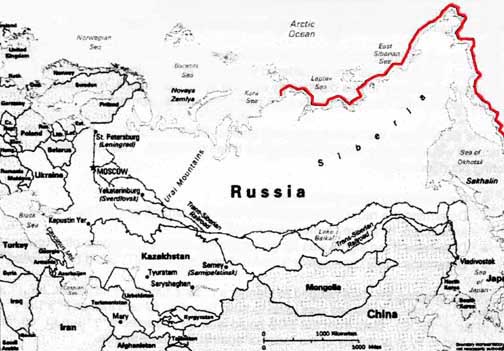|
The Impact of U.S. Aerial Reconnaissance during the Early Cold War (1947-1962): Service & Sacrifice of the Cold Warriors Chapter 2 The Need to Know While Soviet Far Eastern missions were being staged from Alaska (see routes in Map 4, below), another SAC reconnaissance unit began intelligence collection missions in the European theater. The 311th Reconnaissance Wing (RW), also known as SAC’s East Reconnaissance Group, flew F-9 (B-17) photo-mapping aircraft from Thule Air Base, Greenland. While its photo-mapping missions initially began over Greenland, the unit eventually began Operation EARDRUM–the surveying of areas between Iceland and Alaska. (39) |
||||||
 |
||||||
|
Source: Chaliand, 65. Routes drawn in red on above map. |
||||||
| In July 1947, the 311th RW received two F-13A’s specially configured to conduct both PHOTINT and ELINT. After being delivered to the 311th RW, they were transferred to the 16th Photo Squadron (Special) to begin flying intelligence-gathering flights throughout the European theater. (40)
While taking photos of bases, cities and strategic locations was important, the collection of ELINT was vital to the Air Force’s overall mission to prepare for potential conflict with the USSR. A communication between General Spaatz, and then-USAFE commander Lieutenant General LeMay in July 1947 illustrates this point. General Spaatz suggested that photo reconnaissance missions follow-up ELINT indications wherever possible but that the primary mission of the ELINT “ferret” aircraft
The ELINT work was initially targeted against Soviet radar sites–those which U.S. aircraft would have to contend with during times of conflict. The intelligence gathering priorities were:
After collecting the data needed to identify a radar’s function and parameters, the intelligence information collected was used to build targeting folders into an Electronic Order of Battle (EOB). Data from the EOB could later be extracted and used in case the U.S. ever had to fly in proximity of the radar or against the radar site itself. In addition to PHOTINT and SIGINT missions, the third important task of early Cold War reconnaissance units involved monitoring the progress of Soviet atomic weapons testing. The island of Novaya Zemlaya, north of the Soviet Union landmass was an area used by the USSR for atomic testing. Not only did reconnaissance aircraft photograph the island but they were also fitted with special air collection scoops. These scoops collected air samples and ran them through filters that could detect particles of radioactive fallout. On 3 September 1949, a scoop-configured reconnaissance aircraft flying between Alaska and Japan collected the samples which revealed the first test explosion of a Soviet atomic bomb. Based on the analysis of the collected samples, U.S. scientists were able to make a rough estimate on when and where the explosion took place and what type of device it was. (43) President Truman announced the news to the American public and world on 23 September 1949–signaling the end of the U.S. monopoly of atomic weapons. (44) At a time when Cold War aerial reconnaissance was in its infancy, it was poignant that the nation’s first notification of a menacing, increased Soviet threat came from an aerial intelligence asset. As national leaders would witness in the upcoming years with the victory of the Chinese Communists, the Korean War, and the escalation of U.S./USSR confrontation, the importance and vital contributions of U.S. aerial reconnaissance was just beginning. |
||||||
|
Attributions (39) Jackson, 36. End of Page 5 of 5 Pages, Chapter 2 — Go to Chapter 3 You may go to Page — 1 — 2 — 3 — 4 — 5 — this chapter or you may go to Cover Page — Editor’s Introduction — Overview Acknowledgments — Table of Contents Appendixes — A — B — C — D |
||||||